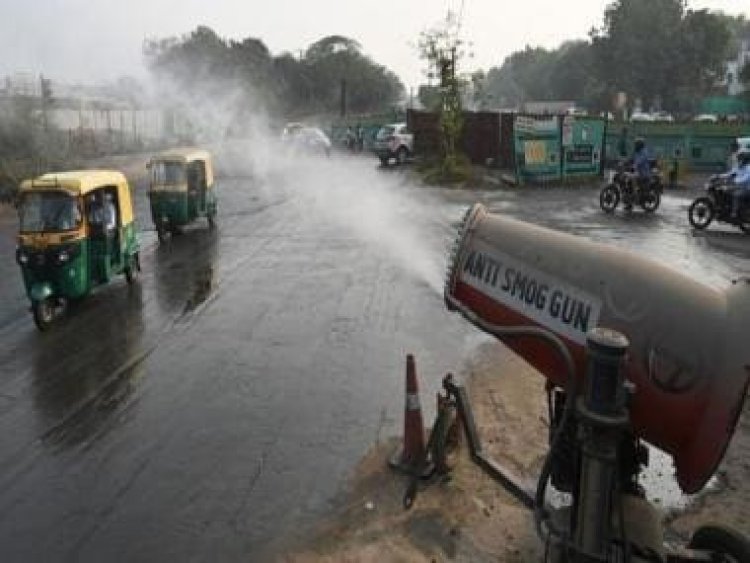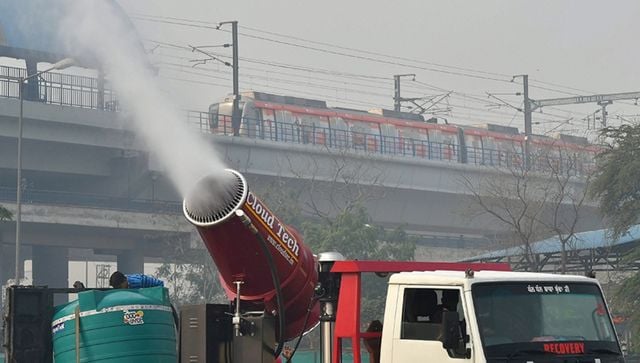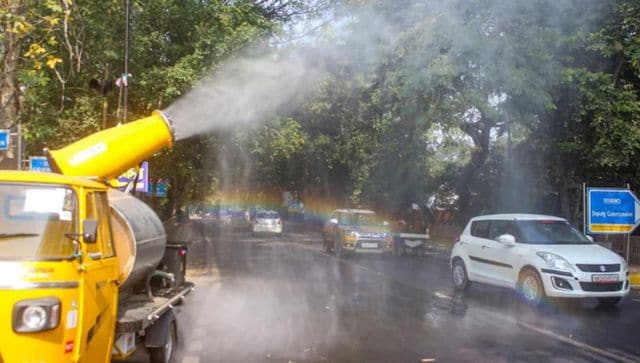Explained: What are anti-smog guns and how effective are they in reducing pollution?
Explained: What are anti-smog guns and how effective are they in reducing pollution?

As air quality deteriorates in the National Capital with the coming winter, the Delhi government has adopted several measures to keep a check on pollution. One such measure under the government’s 15-point ‘winter action plan’ is making anti-smog guns mandatory for construction sites above 5,000 square metres (sqm).
Moreover, these anti-smog guns are also being used on roads by the Public Works Department (PWD), especially at busy traffic crossings.
This year, 120 anti-smog guns are running between 8 am and 8 pm on the roads of the National Capital, while 30 more will ply soon, a PWD official told Indian Express. CNG or BS-VI engine vehicles are being deployed to carry these anti-smog guns, the official informed.
What are anti-smog guns and how effective are they in combating air pollution? Let’s take a closer look.
ALSO READ: The new and improved plan to battle air pollution in Delhi
What are anti-smog guns?
Shaped like a canon, anti-smog guns (ASG) spray tiny droplets of water into the atmosphere to reduce air pollution. The machine is mounted on a vehicle and connected to a water tank which can then be used to suspend particles and settle dust.
The water, which passes through high-pressure propellers, is converted into a fine spray with the size of droplets ranging from 50-100 microns.
ASG can spray around 30-100 litres per minute.
Also known as a spray or mist gun or water cannon, the device binds dust particles and particulate matter (PM2.5 and PM10) in the atmosphere and brings them to ground level with the water to reduce air pollution, as per India Today.

The gun makes a ‘canopy effect’ and is designed such that the water sprinkled from it can reach up to a height of 150 feet, creating artificial mist, as per India Today.
According to Central Pollution Control Board (CPCB) guidelines, anti-smog guns “customised for urban areas” use 40 to 250 litres of water per minute depending on the type of the device.
Treated sewage water should not be used in the anti-smog gun, the guidelines say.
The Arvind Kejriwal-led Delhi government had started a test trial of anti-smog guns in December 2017.
Sources had told Indian Express then that these machines are operated in China.
“This move is inspired by the Chinese water cannons that were used by the authorities there with some success. The idea is that it reduces air pollution by binding dust and other particulate matter, and bring them down to the ground level. This could be of use in an arid place like Delhi,” the source had said.
How effective are anti-smog guns in combating pollution?
The topic remains undecided as experts say there are no studies to determine its impact yet, while most agree it has a limited impact.
“The range of such devices is very limited. It affects, if at all, the air volume of the immediate surroundings of where the spraying is done. The effect diminishes after the spraying is stopped,” Vivek Chattopadhyay, senior program manager for Clean Air and Sustainable Mobility at the Centre for Science and Environment (CSE) was quoted as saying by PTI.
Dipankar Saha, former head of the CPCB’s air laboratory, said an anti-smog gun is not a “permanent solution” to tackle pollution.
Smog covers #Delhi sky; overall air quality in ‘poor’ category
Visuals from Baba Banda Singh Bahadur Setu flyover & Sarai Kale Khan pic.twitter.com/nprKb5AcmG
— ANI (@ANI) October 22, 2022
“If the anti-smog gun is used along the roadside, the particulate matter may settle. It may reduce particulate pollution, but it is not a permanent solution. In emergency situations, where there is a fire or construction and demolition dust, this can be applied so that the situation is not aggravated in nearby areas. For the entire city, it is not possible. Water itself is an important resource,” Saha told Indian Express.
Further, the expert emphasised that the effectiveness of the gun needs to be monitored.

Another expert suggests acting at the “source of pollution” as anti-smog guns are used on a smaller scale.
“We know that in China, they tried artificial rain to control haze. But that works at scale. Rain droplets remove pollutants, water has that ability which is called wet scavenging. That is the idea that is being pursued. Whatever comes beneath the droplets, the droplets will carry the particles and gases. But how many guns can you employ? You’re firing at a small place, and the overall volume is small, so it’s almost inconsequential whether you look at removal or other effects,” Sachchida Nand Tripathi, professor at IIT Kanpur, was quoted as saying by Indian Express.
Smog guns in Delhi
Earlier, only large construction sites of 20,000 sqm or above were required to install anti-smog guns, but this year, it has been made compulsory for smaller construction sites of 5,000 sqm and more.
Sites bigger than 5,000 sqm have to deploy one anti-smog gun, while those over 10,000 sqm have to install two such guns.
For sites bigger than 20,000 sqm, four anti-smog guns are compulsory.
Besides being used on roads, anti-smog guns have also been placed on top of 10 buildings of around seven to ten storeys in the National Capital, reports Indian Express.
Notably, these guns were recently used to settle the dust after the demolition of the Supertech twin towers in Noida’s Sector 93A in August.
With inputs from agencies
Read all the Latest News, Trending News, Cricket News, Bollywood News,
India News and Entertainment News here. Follow us on Facebook, Twitter and Instagram.
What's Your Reaction?

























































